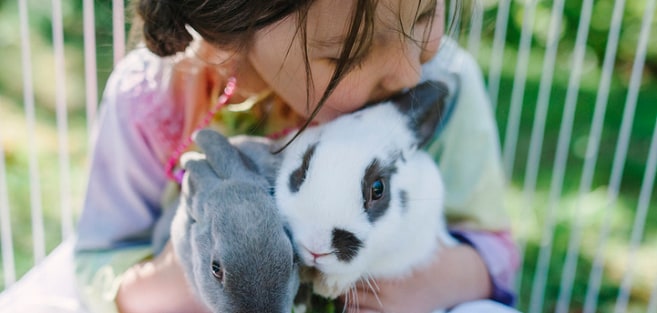Some of your fondest childhood memories probably come from playing with the family dog. Pets provide love, lower stress and teach children about responsibility and empathy. But what are some of the best pets for kids?
With any age group, there are guidelines for providing your child and pet with positive interactions. Safety is first. Young children may make decisions they feel are safe, like dressing the cat or playing doctor with the dog, but they can accidentally injure themselves or the pet.
Parents should always supervise interactions with pets. Parents can make pet ownership successful. Children at all ages must be taught what’s safe and what’s appropriate. Fostering a pet for your local rescue group or shelter before formally adopting. Try a pet and see if it’s a good fit.
If you decide to bring a new pet into the family, start slowly. Quiet interactions in a large space are a great way to start off. Parents should referee the interaction and keep the first introduction as short as 15 minutes. Giving that pet an opportunity to settle in and having regular breaks in future interactions, as well as a ‘kid-free’ space when they feel overwhelmed, will also help. Teach your children proper pet behavior. Encourage your kids to speak in soft tones, pet one at a time and play with the pet using non-contact games like fetch for a dog or a wand toy for a cat.
Are you wondering what would make the best pets for your family, depending on your kid’s age? Here’s a breakdown:
1. Infants (ages 0-1)
During the first year of your child’s life put the focus on introducing the baby to the pets already in your home instead of gaining a new pet. Animals need time to adjust. If you had a cat or dog before the baby joined the family, gradually introduce, familiarise and supervise interactions. You may need to train your dog to behave appropriately around the baby.
2. Toddler (ages 1-2)
Toddlers still have a lot to learn about acceptable pet interactions. If you want to add a pet to your family, start small with a shelf pet like a fish or hermit crab that’s safely contained and cared for inside a protective enclosure. They pose little threat to hurt the child. Both your child and these pets are little creatures that need only limited independence. Encourage your child to embrace curiosity in appropriate ways with your existing pets by answering questions and supervising physical interaction.
3. Preschool (ages 3-4)
This is a great opportunity for your child to welcome a new pet into the home. Guinea pigs are recommended for your preschooler, as they’re affectionate, like your young child, and not likely to evoke harm. Your child can also take on basic pet care responsibilities such as feeding the guinea pig and refilling the water bottle. Parents should expect to be the primary care giver for any pets that are brought into the home.
4. Primary school (ages 5+)
As children and attention spans grow, a variety of pets may be introduced. Start with shelf pets or fish, add other responsibilities, like cleaning up the pet’s habitat, and allow for longer interactions. Introduce gerbils or hamsters to children aged eight or older. Dogs should not be introduced until children are at least five, if not older. Kids should be ready to take on responsibilities, just like with school and chores, which include exercising the animals and pet bathroom needs.
The best pets for kids can grow to become an important part of your family by ensuring safety, teaching your kids about the responsibilities pets require and providing meaningful and enriching interactions. Whether a pet is already part of the gang or you’re waiting for your children to be ready, animals are a great addition to any family.
Read Next: Homemade Dog Shamoo: 5 Natural Recipes
Read Next: 6 Ways Cats Make Great Pets
Read Next: Being a Successful Dog Walker

